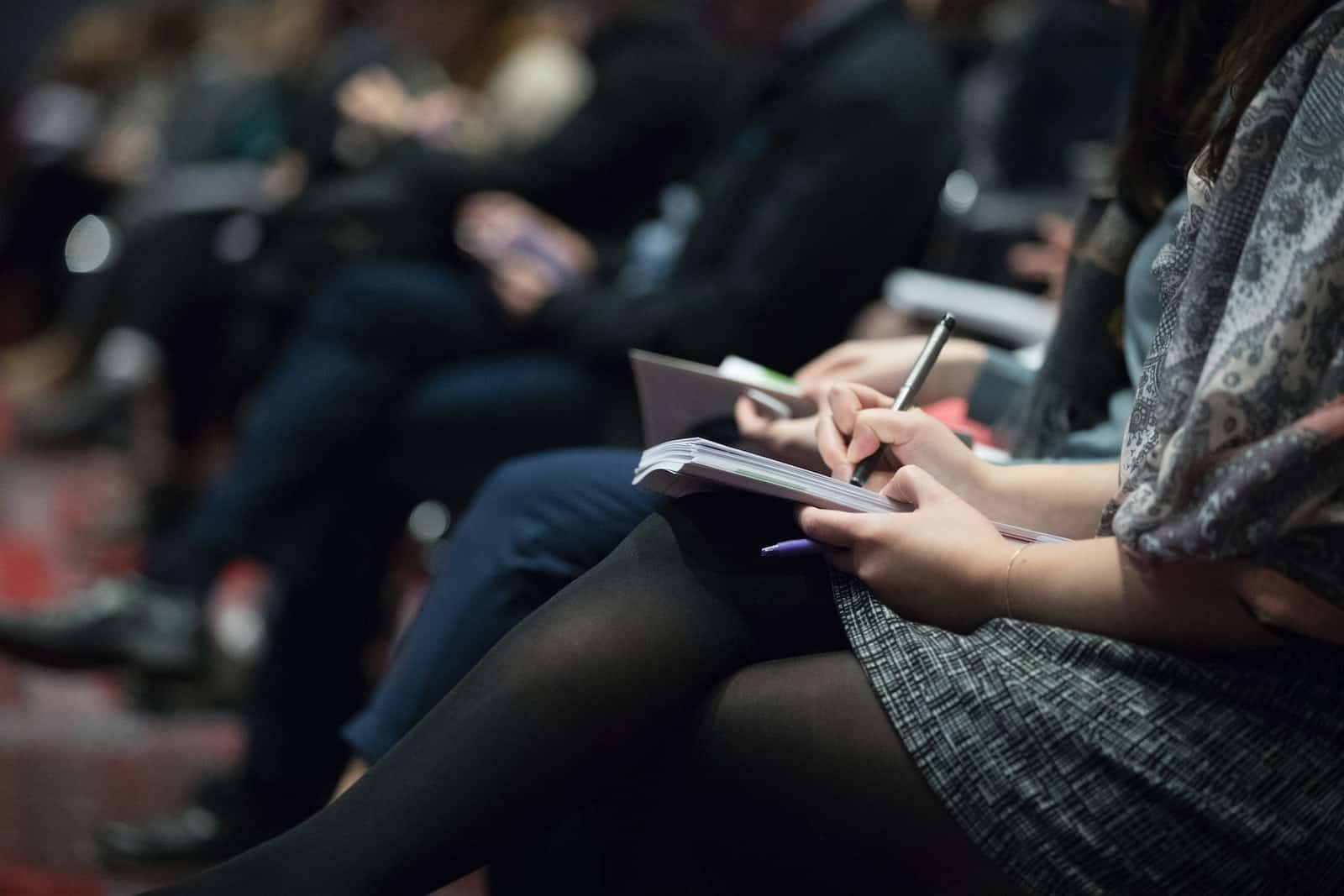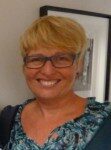
What works and what doesn’t? Discussing ways to co-create activity promoting neighborhoods with youth.
Abstract Overview
Purpose: Implementing interventions targeting the built and social neighborhood environment could reduce physical inactivity and counteract the inequalities in activity participation seen among youth. For such interventions to be successful, they must be planned with the end-users in mind, but how and with whom do we organize the co-creation, and when should stakeholder involvement take place? The aim of this symposium is to compare four different ways for co-creating environmental interventions aimed at promoting active living in youth and discuss their strengths and limitations. This symposium will clarify the role of different stakeholders, and the various ways to proceed, for more effective co-creation projects in the future.
Description: A variety of models for co-creation processes exist. These differ according to when in the process co-creation takes place, the level of collaboration between stakeholders and the benefit for the end-users. The symposium will present and discuss four research projects in three European countries involving youths as a user group, but where the approaches to the co-creation process differed. In the Netherlands, researchers in the LIKE project co-created actions together with end users to promote children’s and adolescents’ physical activity. In Denmark, the project Move the Neighborhood explored how to improve public open spaces in deprived neighborhoods through co-creation with children, teachers, and urban designers, while in the YoPA project, adolescents participated as co-researchers with researchers in a co-creation process improving the built environment in youth clubs in deprived neighborhoods. In Norway municipal planners were responsible for developing new public open spaces together with adolescents and professional advisors in six municipalities. Experiences, including potential impact on end users of the processes will be communicated. Strengths and limitations of the examples and how to organize future co-creation projects for promoting physical activity in the young population will be discussed with the audience.
Chair: Ingeborg Pedersen, Department of Public Health Science, Norwegian University of Life Sciences, Aas, Norway
Presenter 1: Charlotte Skau Pawlowski, Research unit for Active Living, Department of Sports Science and Clinical Biomechanics, University of Southern Denmark, Odense, Denmark
Presenter 2: Line Madsen, Department of Sports Science and Clinical Biomechanics, World Playground Research Institute. University of Southern Denmark, Odense, Denmark
Presenter 3: Ellinor Moe, Department of Public Health science, Norwegian University of Life Sciences, Aas, Norway
Presenter 4: Teatske Altenburg, Amsterdam UMC location Vrije Universiteit Amsterdam, Public and Occupational Health, Amsterdam, The Netherlands and Amsterdam Public Health, Health Behaviours and chronic disease, Amsterdam, The Netherlands
Discussant/moderator: Jasper Schipperijn, Research unit for Active Living, Department of Sports Science and Clinical Biomechanics, University of Southern Denmark, Odense, Denmark
Evaluation of a public open space intervention co-designed with children from a Danish deprived neighbourhood
Charlotte Skau Pawlowski1, Tanja Schmidt1, Jonas Vestergaard Nielsen1, Jens Troelsen1, Jasper Schipperijn1
1Research unit for Active Living, Department of Sports Science and Clinical Biomechanics, University of Southern Denmark, Campusvej 55, 5230 Odense M, Denmark
Background: Knowledge on how to improve public open spaces in deprived neighbourhoods to increase active living among children is scarce.
Purpose: The aim was to explore if involving children from a deprived neighbourhood in designing and creating playable installations in a public open space influenced their use of this space.
Methods: The design process took place at the local public school during craft and design classes, one day a week from January to May 2017. The process included two grade 5 classes (11-12-years-old)(n=39 children), two teachers, and was facilitated by three urban designers using different co-design tools and methods. To gain knowledge of the co-design process, two focus group interviews were conducted with 12 randomly selected children, and individual interviews were conducted with the teachers and designers.
Results: Use slightly increased for a few children, but many of the involved children did not use the public open space after intervention. The process evaluation revealed aspects that could explain why most of the children did not use the space after intervention. The children felt left-out during the transformation from drawings to final design and construction. The difficult part was that also other stakeholders, neighbors, rules for playground safety, construction, and costs were needed to be taken into account by the designers. It also became clear that the time frame of the co-design process hindered the designers in creating a new culture around the intervention site.
Conclusions: Our research highlighted challenges associated with how the children perceived their role in the process.
Practical implications: To avoid these challenges, future co-design projects would benefit from being comprehensively planned in collaboration with all stakeholders having a clear alignment of expectations from the beginning.
Funding: The study was funded by The Danish foundation TrygFonden, The Danish Foundation for Culture and Sports Facilities
YoPA; A Youth-centred Participatory Action towards co-created implementation of socially and
physically activating environmental interventions
Line Madsen*, Marie-Louise Haurum** , Jasper Schipperijn*, Charlotte Skau Pawlowski*
* Department of Sports Science and Clinical Biomechanics, World Playground Research Institute, University of Southern Denmark, Odense, Denmark
** Department of Health Science and Technology, Aalborg University
Background: A vast majority of teenagers do not meet guidelines for healthy movement behaviours, posing major risks for developing multiple non communicable diseases. Sustainable implementation of lifestyle interventions focused on teenagers as a key challenge. YoPA includes four intervention sites: Osogbo (NG), Soweto (SA), Amsterdam (NL) and Aalborg (DK).
Purpose: YoPA focuses on co-creating and implementing socially and physically activating environmental interventions to improve the lifestyle of teenagers facing vulnerable life situations. Teenagers actively participate as co-researchers in local co-creation groups, engaging key stakeholders through a participatory approach.
Methods: In Nørresundby, Aalborg, two co-creation groups of 15 adolescents from deprived youth centers engaged in bi weekly co creation meetings from December 2023 to July 2024 facilitated by a researcher. The adolescents participated as co-researchers during two phases of the co-creation process. The initial phase focused on mapping the local system, while the subsequent phase centered on tailoring socially and physically activating environmental interventions. The evaluation of the co-creation process focused on the adolescents’ perspective on the co-creation process, implementation, and their adoption. Two focus group interviews were conducted with participating adolescents in December 2023 and June 2024, respectively. Participant registrations was collected during each meeting to register participation maintenance, and the adolescents wrote notes after each meeting, creating their own diary of the process. Observations and field notes were recorded four times throughout the co-creation process.
Results: Results will be presented at the ISPAH congress in October 2024.
Practical implications: Scientifically, YoPA contributes to adolescent health research, offering innovative methods for behavior change and education. Beyond theoretical implications, the project serves as a comprehensive educational opportunity, fostering insights into PA and decision-making processes, potentially motivating increased PA participation.
Funding: EU Horizon funded project (EU Project ID: 101095423).
Rethinking who’s the expert: lessons learned from co-creating public open spaces with adolescents.
Ellinor Moe, Emma Nordbø, Camilla Ihlebæk and Ingeborg Pedersen
Department of Public Health science, Norwegian University of Life Sciences, Norway
Background: Implementing built environment interventions in local communities to reduce physical inactivity and loneliness among youth is a prioritized task in Norwegian municipalities. In the Eastern parts of Norway, six municipalities have co-created public open spaces (POS) together with different stakeholders.
Purpose: The study aimed to explore what planners and adolescents a priori found to be the most important factors for a POS to be used, and to investigate planners’ experiences of co-creating public open spaces with adolescents.
Methods: 27 planners (municipality employees and professional advisors/consultants) and 29 adolescents participated in group interviews, of these 21 planners and 20 adolescents also answered a questionnaire rating the importance of a variety of factors related to the use of the POS.
Results: The planners and adolescents agreed that social factors were most important to promote use of the POS. However, a significant discrepancy in rated importance of factors related to design and opportunities for activity at the POS was discovered between the two stakeholder groups. The planners experienced the adolescents as a source of inspiration and motivation, and they were impressed by their knowledge and commitment. However, to use the adolescents’ knowledge in an optimal way for developing the POS, the co-creation processes had to be initiated at the right time, and the co-creation methods and tools had to be continuously adapted to each project.
Conclusions: Acknowledging the adolescents as experts and adapting the co-creation process accordingly made the planners feel more confident during the development of the POS and resulted in a changed view of their own role.
Practical implications: Successful co-creation and use of POS requires that planners are open-minded, acknowledge the capacity of youth, and adapt their role and methods throughout the planning process.
Funding: The Research Council of Norway, nr. 326799.
Collaborating with adolescent co-researchers to co-create actions promoting 10-14-year-olds’ healthy lifestyle: the LIKE project
Teatske Altenburg1,2, Helga Emke1,2,3, Coosje Dijkstra1,2,3, Stef Kremers4, Mai Chin A Paw1,2
Affiliations
1 Amsterdam UMC location Vrije Universiteit Amsterdam, Public and Occupational Health, De Boelelaan 1117, Amsterdam, The Netherlands
2 Amsterdam Public Health, Health Behaviours and chronic disease, methodology, Amsterdam, The Netherlands
3 Department of Health Sciences, Faculty of Science, Vrije Universiteit Amsterdam, Amsterdam Public Health research institute, the Netherlands
4 Department of Health Promotion, NUTRIM School of Nutrition and Translational Research in Metabolism, Maastricht University Medical Centre, the Netherlands
Background Within the LIKE project, youth-centred Participatory Action Research (PAR) was combined with methods from systems dynamics to co-create actions in the physical and social environment to promote adolescents’ healthy lifestyle behaviours.
Purpose The aim of the present study was to evaluate the process of PAR with adolescents.
Methods Adolescents were recruited from 2 primary and 2 secondary schools in a disadvantaged neighbourhood in Amsterdam East. Four PAR groups including 4-8 adolescent researchers (aged 10-14) and 1-2 academic researchers met weekly during 3 to 4 school years (September 2018-December 2021). Data on the process of collaborating with adolescents and other involved stakeholders to co-create, implement, and evaluate actions was collected through research logs (by academic researchers), reflection forms (by both adolescent and academic researchers) and (focus group) interviews (with adolescent researchers and involved stakeholders).
Results Adolescent researchers and involved stakeholders experienced the collaboration as beneficial (e.g. co-learning) and satisfactory (e.g. fun). Adolescents indicated that the process was based on shared decision-making (e.g. selecting research activities, developing actions). Academic researchers experienced sharing power with adolescents and making methods from systems dynamic adolescent-friendly as challenging. Co-created actions targeted different systems levels, primarily taking the form of one-time pilot initiatives. Academic researchers experienced recruiting and engaging stakeholders for sustainable implementation of the co-created actions as the biggest challenge in the implementation process.
Conclusion Following a democratic process of shared decision making, we succeeded in implementing co-created actions. However, actions were mostly one-time pilot initiatives, stressing the importance of stakeholder support for sustainable implementation of actions.
Practical implications Future studies are recommended to engage (potentially) relevant stakeholders preferably from the start of the project and invest in the development of adolescent-friendly systems dynamic methods.
Funding The Netherlands Cardiovascular Research Initiative and the Netherlands Organisation for Health Research and Development (ZonMw), CVON2016–07 LIKE.
Additional Authors
Name: Charlotte Skau Pawlowski
Affiliation: Research unit for Active Living, Department of Sports Science and Clinical Biomechanics, University of Southern Denmark, Odense, Denmark
Presenting Author: yes
Name: Line Madsen
Affiliation: Department of Sports Science and Clinical Biomechanics, World Playground Research Institute. University of Southern Denmark, Odense, Denmark
Presenting Author: yes
Name: Ellinor Moe
Affiliation: Department of Public Health science, Norwegian University of Life Sciences, Aas, Norway
Presenting Author: yes
Name: Teatske Altenburg
Affiliation: Amsterdam UMC location Vrije Universiteit Amsterdam, Public and Occupational Health, Amsterdam, The Netherlands and Amsterdam Public Health, Health Behaviours and chronic disease, Amsterdam, The Netherlands
Presenting Author: yes

